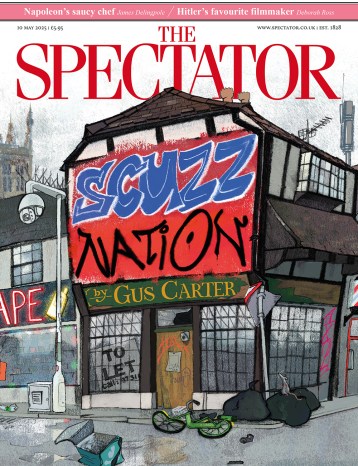-
AAPL
213.43 (+0.29%)
-
BARC-LN
1205.7 (-1.46%)
-
NKE
94.05 (+0.39%)
-
CVX
152.67 (-1.00%)
-
CRM
230.27 (-2.34%)
-
INTC
30.5 (-0.87%)
-
DIS
100.16 (-0.67%)
-
DOW
55.79 (-0.82%)
The trouble with Rachel Reeves’s ‘National Wealth Fund’
What country ever went wrong with a sovereign wealth fund? It is easy to envy Singapore and Norway – the latter of which now has £1.3 trillion squirrelled away, equivalent to £240,000 for every citizen. Britain would be in a much better situation now had it, like Norway, invested its windfall from the North Sea, rather than chucking it into the pot of general day-to-day expenditure. Paying state and public sector pensions liabilities out of tax revenue rather than from a long-term investment fund is going to become an ever more serious burden on the state.
We shouldn’t, then, sniff at Rachel Reeves’ idea for a ‘national wealth fund’. It is just that what the Chancellor has in mind is very different from what Norway has. Firstly, there is the question of scale. Britain doesn’t exactly have a lot of state wealth to invest just at the moment. While Norway’s fund has been grown from half a century’s worth of oil and gas revenues, Reeves’ fund will be started with a modest £7.3 billion squeezed out of the public budget, in a context of a government that is heavily overdrawn on its current account. From a personal point of view I would look to pay off my credit card balance before I started having a flutter on the stock market.
But then Reeves’s fund isn’t predominantly about accumulating wealth. While the Norwegian fund has its 18 trillion kroner spread over 9000 companies in more than 70 countries, Reeves is looking to concentrate on one asset class, and an extremely dodgy one at that: early stage green technology. She wants to invest in green steel (made using hydrogen rather than coking coal as a reducing agent), in hydrogen production from electrolysis of water and in carbon capture and storage – the sort of technologies we need, in other words, if we are to get anywhere near reaching Britain’s 2050 net zero greenhouse gas emissions target without returning to the stone age.
I can tell you what investing in this sort of stuff is like from personal experience. Three years ago I bought a small stake in a company called ITM power – whose business is in producing green hydrogen – at 240 pence a share. It was great at first as the shares galloped up to over 600 pence. I thought I would just wait until I had trebled my money and then sell at least half my holding. But then I went away on holiday and forgot about them. Their price now? Er, 57 pence a share.
That is what Reeves can expect to happen to her National Wealth Fund. She will have losses galore. If she does make us a profit it will come on the back of fantastic returns on one or two holdings – while most others collapse. That is the nature of investing in early-stage companies.
What Rachel Reeves is setting up doesn’t really deserve to be called a National Wealth Fund
This is not to say that it is wrong for the government to invest in green technology. Clearly, there is a national interest in cleaning up our energy system and the like. And if taxpayers are going to put money in, it is better that we buy a stake rather than simply handing out grant after grant. Then we can at least share in the success stories.
Moreover, it is a relief to know that Reeves and her Treasury officials won’t be picking the stocks themselves. They plan to leave it to the National Infrastructure Bank set up by Rishi Sunak when he was Chancellor in 2021 – and which will have to take a very hard-headed attitude and be prepared to ditch companies whose ideas are failing. Governments, it hardly needs repeating, have a pretty appalling record at trying to ‘pick winners’. They tend to go for all the highly visible stuff and prestigious stuff, like making cars and aeroplanes, and miss out the boring companies which are making the better profits. They also have a habit of chucking money at companies which happen to employ large numbers of people in marginal constituencies – not the greatest investment technique.
For years, Britain has seemed to possess a Sovereign Poverty Fund that invests our cash in basket cases like Royal Bank of Scotland (now NatWest) and then sells out at the first hint that a company might actually make a profit. Taxpayers bear the losses and leave private investors to enjoy the gains. It would be a novelty for our cash to be invested purposely to make a profit. However, what Rachel Reeves is setting up doesn’t really deserve to be called a National Wealth Fund. It is really just a novel way of subsidising green technology. Seen in that light it is not such a bad idea – just don’t expect it to pay your pension.
Listen to more analysis from Katy Balls, Kate Andrews, and James Heale on Coffee House Shots:
Labour slammed over cost of scrapping Rwanda plan
Uh oh. It’s day five of Sir Keir’s new Labour government and already the reds are running into trouble. Politicians confirmed last week Sunak’s Rwanda plan was to be scrapped, with the Labour party instead planning to tackle immigration by ‘smashing the gangs’. But there is a cost to the change of tack – and a rather steep one at that.
It turns out that the Rwandan government is a little reluctant to repay the money it received from the UK for the scheme, saying it is ‘under no obligation’ to return the £270 million sum. Dr Doris Uwicyeza Picard from the country’s ministry of justice told the BBC:
We are under no obligation to provide any refund. We will remain in constant discussions. However, it is understood that there is no obligation on either side to request or receive a refund. We were informed of the UK’s decision. We take note of the UK’s decision to terminate the agreement. There is a break clause which means the UK can withdraw from paying a further £50m in 2025 and again in 2026. Rwanda has maintained its side of the agreement, and we have ramped up capacity to accommodate thousands of migrants and asylum seekers. We have upheld our end of the deal. We understand that changes in government happen and incoming governments have different priorities and different policies. However, this was a state to state agreement and we believe this good faith will remain.
In the meantime, Downing Street has promised to look ‘very carefully’ at money that could be retrieved and new Home Secretary Yvette Cooper is planning an audit of the policy. Home Office rep Sir James Eadie has said that asylum claims from those initially expected to be deported to the African country ‘will be considered in a manner consistent with the new government’s new asylum policy’ adding that this ‘does not involve removals to Rwanda’. How curious…
Former home secretary James Cleverly – whose ex-aide called the scheme ‘crap’ – has hit out at the government over the move, criticising it for giving up on millions of pounds and starting a ‘diplomatic row’. He tweeted sarcastically: ‘Great start for Yvette at the Home Office…’. Quite.
What will the relationship between Starmer and King Charles be like?
When the King greeted Keir Starmer last Friday, his first words to him were: ‘You must be utterly exhausted and nearly on your knees’, to which the new Prime Minister replied: ‘Not much sleep.’ From the body language and easy rapport between the two men, most inferred that this was a relationship that was likely to be a productive and enjoyable one on both sides. This is quite the turnaround from Starmer having said in 2005, ‘I also got made a Queen’s Counsel, which is odd, since I often used to propose the abolition of the monarchy.’
Starmer has since rowed back from his republican views, without wholly disavowing them; his meetings with King Charles will now become a weekly tradition. Most Wednesdays, if the Prime Minister or monarch is not absent on business – as is the case this week – the two men have an audience, without any courtiers or special advisers present. No record is kept of the discussions that occur, although that did not stop Peter Morgan speculating as to their content, firstly in the film The Queen, secondly in the play The Audience and lastly – and most notoriously – in The Crown. The idea behind them is, ideally, for an experienced monarch to offer a less seasoned PM counsel and useful advice, and for his (or her) first minister, in turn, to keep them abreast of affairs of state.
The King’s weekly meetings with Starmer should be a fruitful and pleasant association for them both
It is generally known which prime ministers Elizabeth II liked (Winston Churchill, Harold Wilson, John Major, Gordon Brown) and which ones she was either cool about or positively detested (Margaret Thatcher, Tony Blair, Boris Johnson). Although she was once described by the diarist Chips Channon as ‘openly, assuredly, dangerously Tory’, the late Queen was anything but party political, as might be seen by the leaders she had a rapport with, and those she disliked. She tended to favour those who made a fuss of her and were (Churchill aside) non-demonstrative personalities, while disliking the more confident, outgoing types who would attempt to tell her what to do and put her in her place.
King Charles’s politics are believed to lie to the left of his mother’s, and if his last two Christmas Day addresses are to be taken as a guide, his social and environmental concerns place him somewhere between the Green party and New Labour. In theory, then, his weekly meetings with Starmer should be a fruitful and pleasant association for them both.
Yet it would be wrong to see Charles as some kind of egalitarian figure. He is, after all, King, and has grown up in luxury and privilege all his life. Although he has talked about opening up monarchy to make it more accountable to the people, in practice so far this has meant allowing access to Balmoral and Buckingham Palace for expensive, limited guided tours. And if Starmer ever comes out with his time-honoured line about his father being a toolmaker, Charles has a ready-made riposte: ‘My mother was Queen.’
Some have suggested that the thin-skinned King may be unwilling to forgive Starmer his youthful comments on abolishing the monarchy, but this may be giving Charles too little credit. His first formal encounter with Starmer came in 2014, when he knighted the former director of public prosecutions, and since then the two men have frequently met on formal occasions. It was an undeniable mark of favour – as well as Buckingham Palace seeing which way the political wind was blowing – that Starmer was invited to Charles’s first ‘dine and sleep’ occasion at Windsor Castle in March 2023. As recently as last month, the Labour leader was very deliberately placed next to the King’s private secretary Sir Clive Alderton at the banquet to commemorate the Japanese emperor’s state visit. One imagines that there were more pressing matters for discussion than the quality of the wine.
Starmer is currently in the midst of what may be a short-lived honeymoon period, where the hostile media have largely kept their distance and his partisans are swooning over a man many once privately decried as stolid and uncharismatic. When his relationship with Charles can develop in earnest, he is likely to find, as every prime minister does, that the shine will come off very quickly, and he will need the older man’s counsel from both a practical and human perspective.
As for the King, still recovering from a gruelling cancer treatment, he had mixed feelings towards Starmer’s predecessor – calling the election without giving him sufficient consultation was very much frowned on. He will be hoping then for a respectful, civilised PM who wishes to forge a partnership on issues that interest the monarch, and won’t cause havoc on constitutional matters. Only time will tell whether Starmer – in this matter and others – can live up to his expectations.
Spectator summer party 2024, in pictures
The election is over and with MPs now being sworn in, where better to take the temperature of Westminster then at The Spectator’s annual summer party? As New York Magazine recently wrote, it is ‘an unmissable event on the social and political calendar’ and perhaps the only place in the world that you would find Jordan Peterson laughing at the Archbishop of Canterbury’s jokes.
The party, always in early July, is typically a scene of political drama: prime ministerial resignations, leadership plots etc. ‘But while the Tories inside are licking their wounds,’ said Sky News’s Sam Coates, reporting outside the door, ‘it’s been a parade of Labour cabinet members coming in and out of the building behind me that has been the most striking.’ The Times made the same observation. Amidst the usual mix of politicians, actors, academics, journalists and clerics we were delighted to welcome ten students from the Social Mobility Foundation (with whom we have long collaborated). And of course, Mr S was on hand to hear all the latest gossip.
Below are a selection of photos from the event, taken by Jamie Lorriman and Tom Aizenberg.

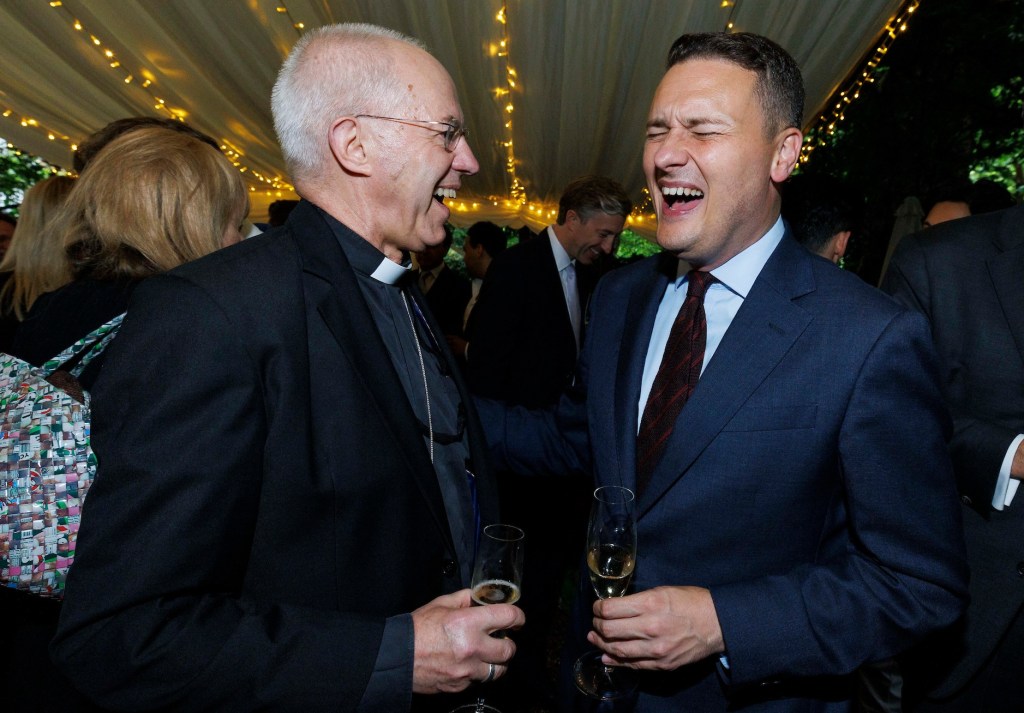



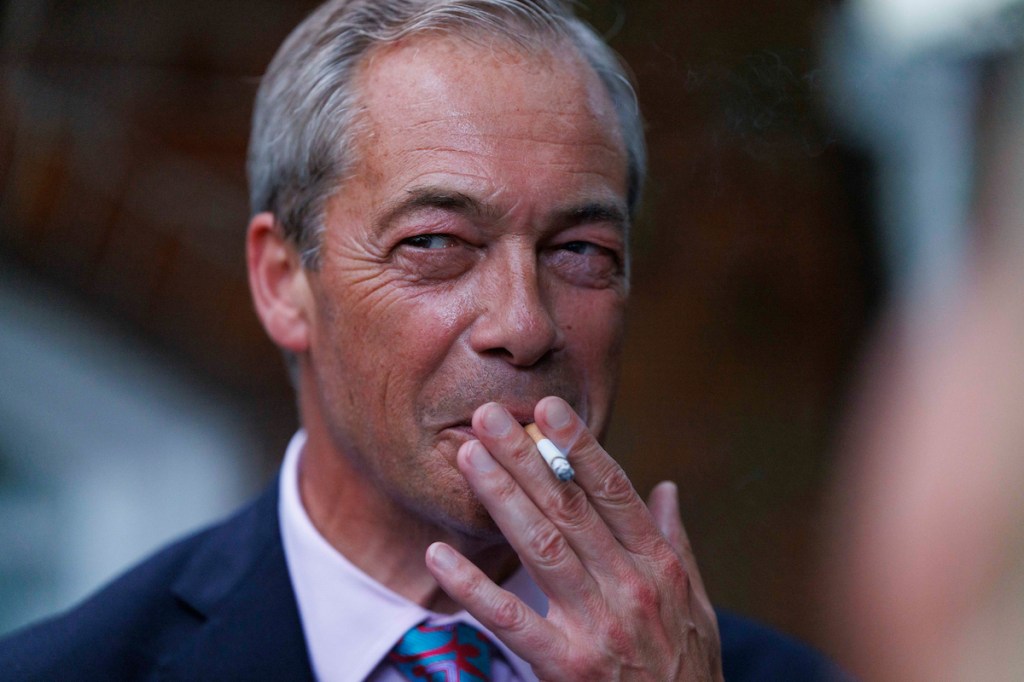

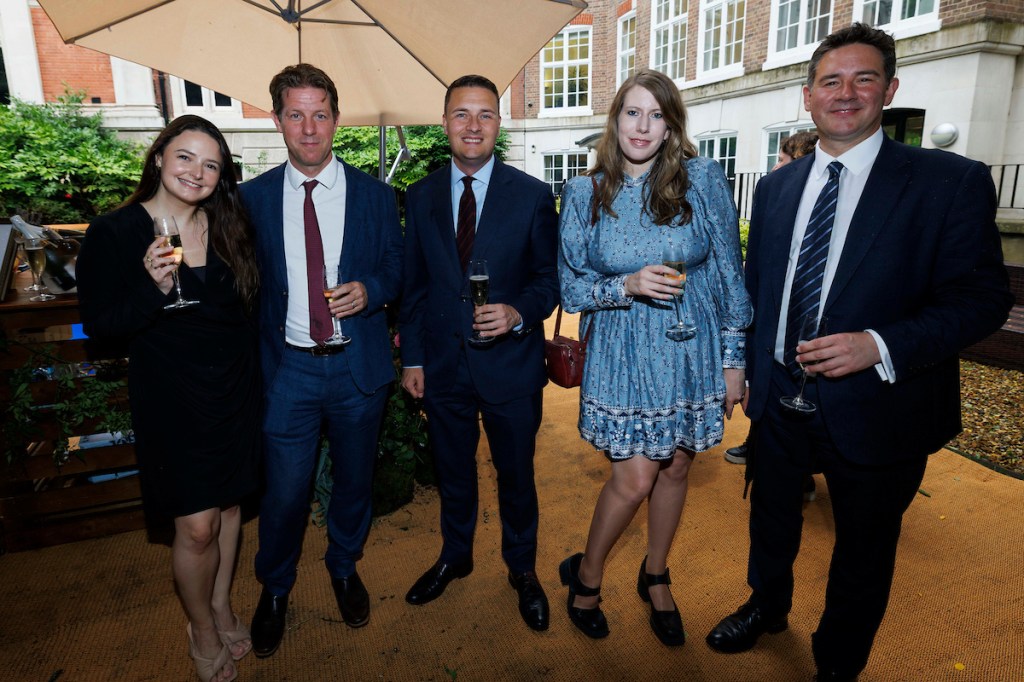


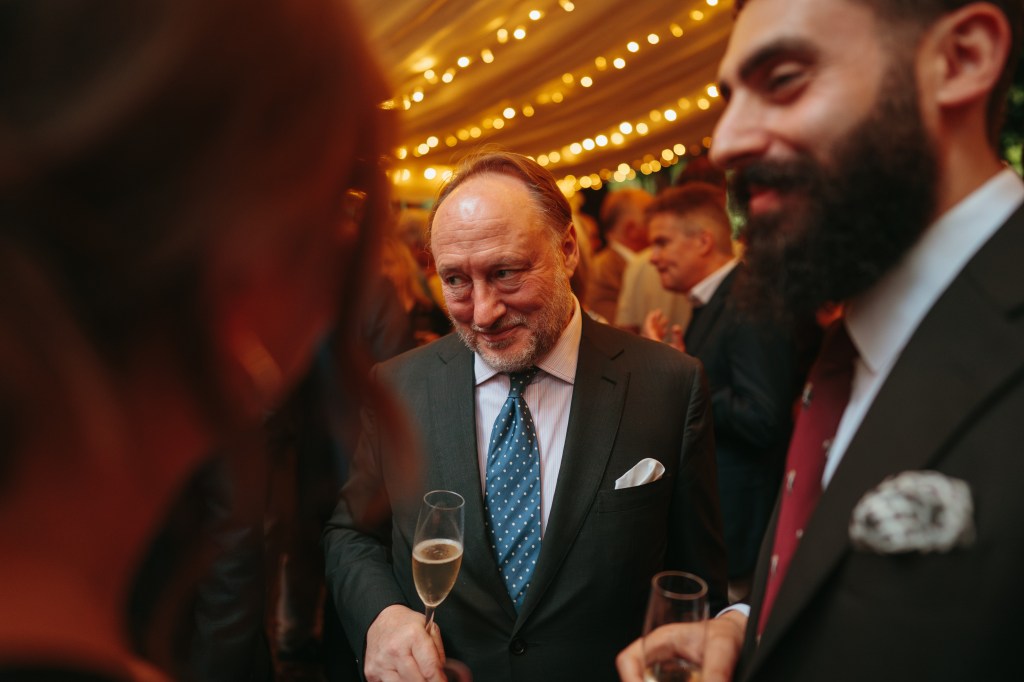
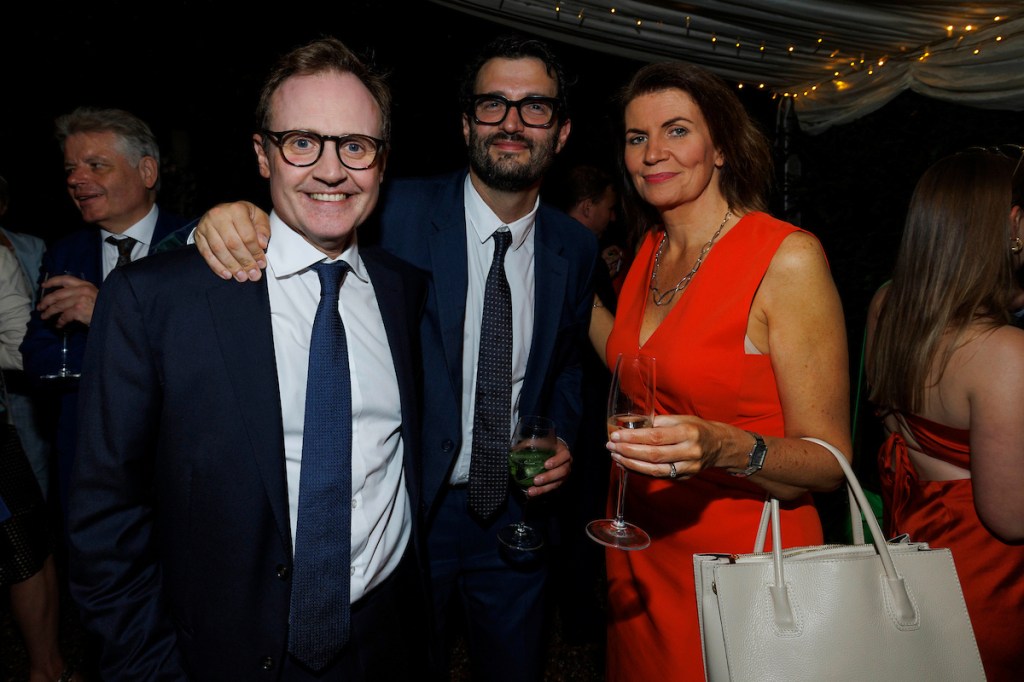

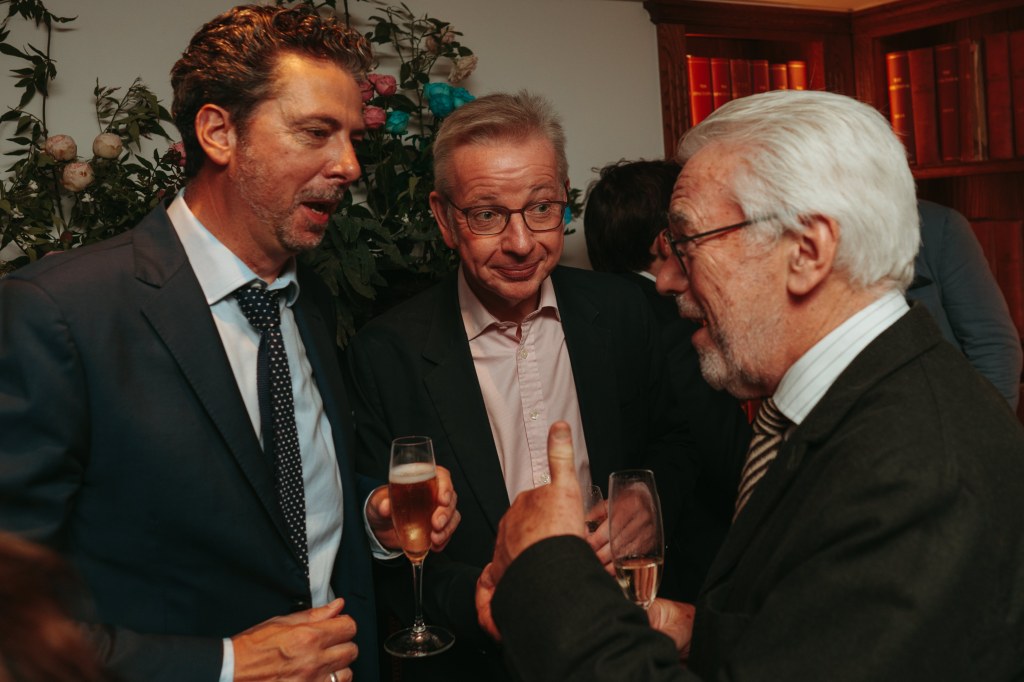
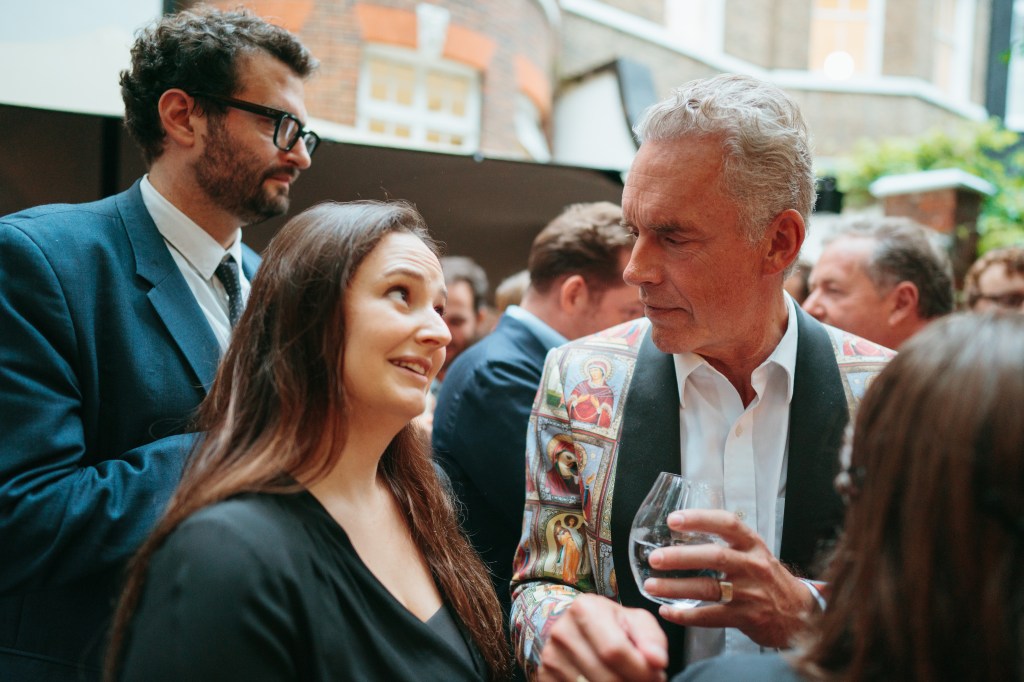
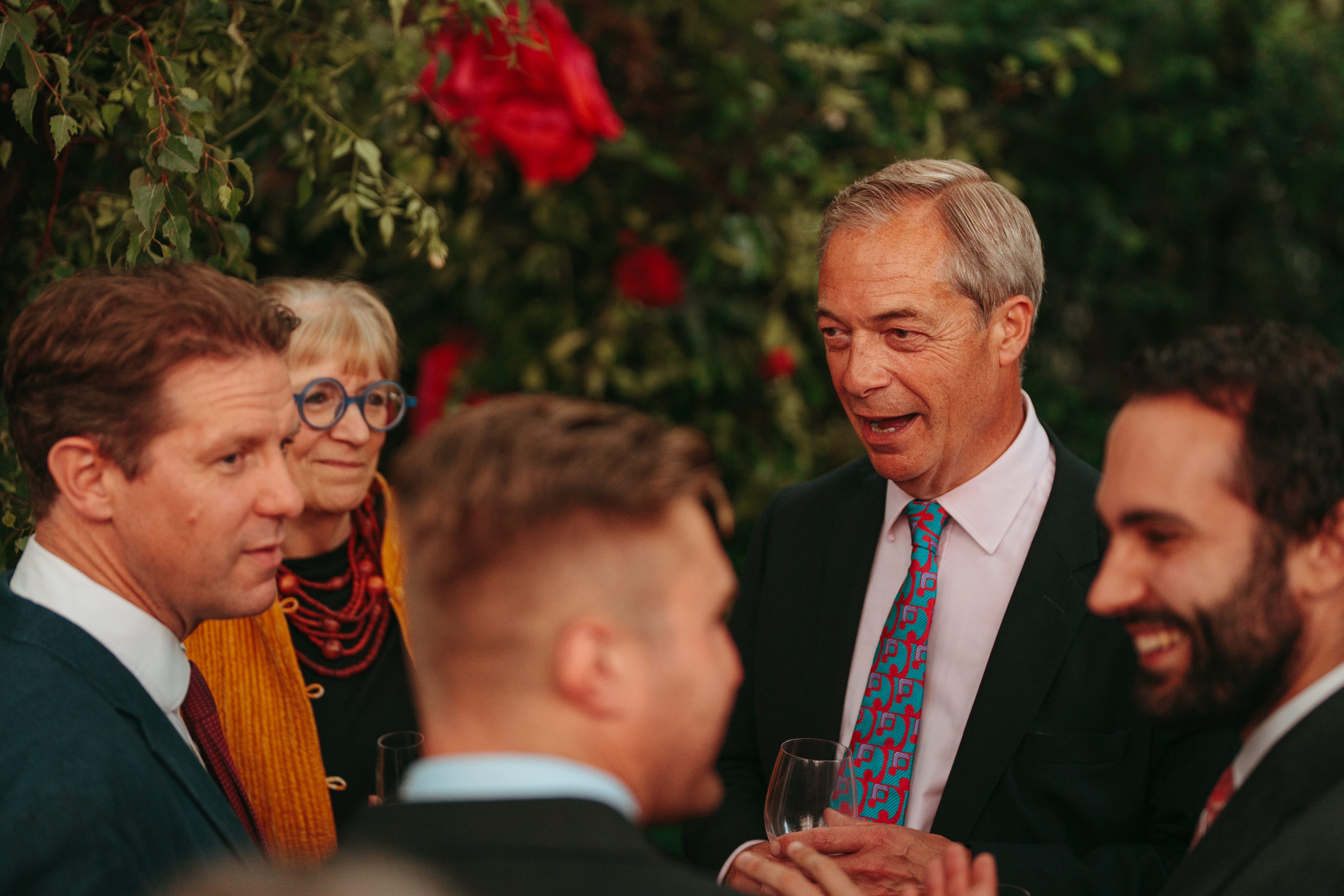


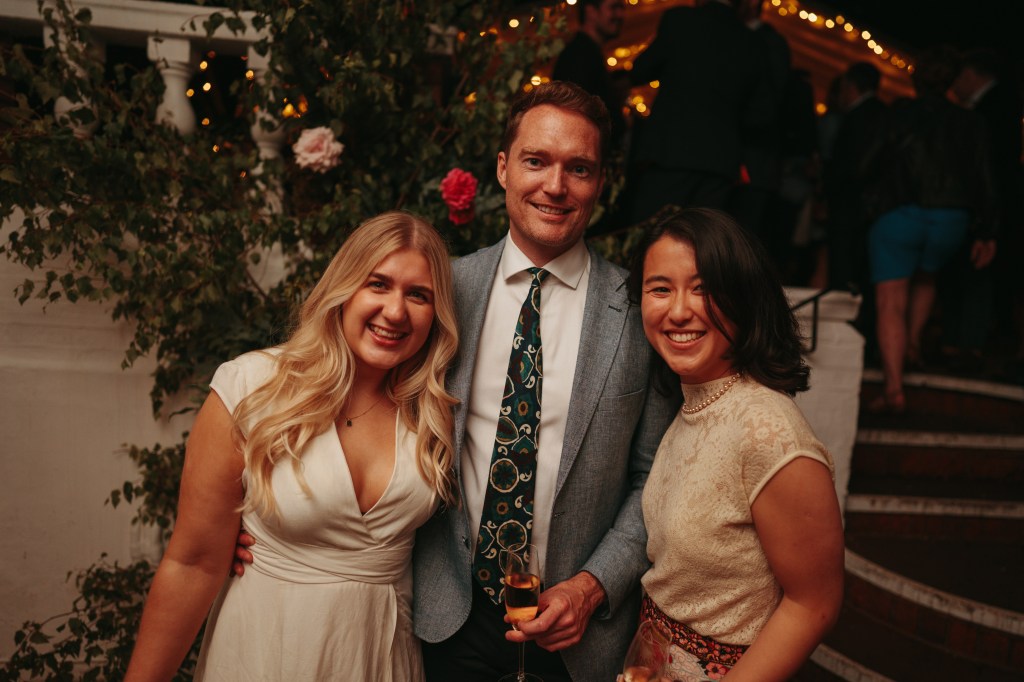


Emmanuel Macron is cornered
They’re playing with a Rubik’s Cube in Paris trying to cobble together a government. An Italian-job technocratic government? A national government of all talents? A wonky coalition in the hope that something turns up? Perhaps France might discover, like Belgium, that it does better with no government at all.
Emmanuel Macron, who has provoked this political nervous breakdown, normally rushes onto television to treat French voters to his subtle thoughts, and perhaps he will break his silence and confide in us. His prolonged silence has nevertheless been telling. He’s cornered.
Why he did this is inexplicable. He’s become the chained duck
Obviously by any rational criteria of job performance Macron is guilty of gross misconduct and should be escorted out of the building by security. It’s more complicated than that. Even though he is the architect of this capharnaüm the constitutional process of replacing him would add even more instability to the political entropy.
Paris is divided in three parts and has a strong resemblance to a circus, with an unruly crowd at the perimeter. There’s the Big Top of the Assemblée National, scene of both immediate battles as well as a stage for prospective presidential candidates to strut in the run-up to 2027, or whenever the next presidential election might be.
Glowering across the contaminated Seine is Macron’s Elysée Palace, where he is hunkered down with Brigitte and advisers who no longer trust him and are leaking like a tamis. YouTube has become a festival of Downfall parodies of Macron raging in his bunker.
And then there are the 10,000 or so people of the Paris blob – the smug leftist journalists, academics, subsidariat, well-schooled snobs – who once thought themselves untouchable but are now confronted by the spectre of barbarians at the gate and fear of another orgy of civil disorder.
Macron had three years remaining on his second term when he triggered this election, which has lost him his relative parliamentary majority, his own credibility and the credit of France. Why he did this is inexplicable. He’s become the chained duck.
Not to insult him, but to attempt to explain him, is he losing control of himself? He ticks every box in the Narcissistic Personality Disorder diagnosis. His emotional intelligence is net zero and voters have grown to despise him. Elections have become a referendum on him and he keeps losing.
One secret in plumbing the depths of important men is to chercher la femme. Macron married his drama teacher 24 years his senior and performance remains crucial to his personality. He can be very charming in a small group, where it’s clear he is the sovereign. But in public he is clumsy and sometimes outrageous. He is increasingly resembling a cosplaying drama student who loves to dress up.
At the very start of his presidency, he had himself photographed after his inauguration. He was immaculate in a beautifully cut suit, his Legion d’Honneur illuminated, solemnly proceeding through the Hall of Mirrors at Versailles, flanked by the Republican Guard in their extravagant dress uniforms, with drawn swords. It was beautifully photographed, and an extraordinary, boastful image. The French had elected a king, an absolute monarch.
Soon after, after brutally sacking the chief of the military to show he was in charge, he moved to establish his authority as commander in chief by visiting a French nuclear submarine and dressing up like a naval officer in a military tunic. A grand spectacle. Arrival in helicopter.
More recently he took to a khaki sweatshirt to channel Volodymyr Zelensky. Macron the warrior. A few weeks ago it was his Sylvester Stallone tribute, Emmanuel ‘Rocky’ Balboa Macron, working out with a punch bag in a gym in Paris. The photograph was taken by the official Elysée photographer and the bulgy biceps are rumoured to have been photoshopped in post-production. The stunt is thought to have been Brigitte’s idea. Boxing fans were nevertheless unimpressed by his jab.
And then, last week, in the most provocative gesture of them all, he dressed up like Tom Cruise. The very day after the first round of the National Assembly election, he was parading before the paps in a stylish leather jacket and baseball cap. The Top Gun. Lieutenant Emmanuel ‘Maverick’ Macron. Brigitte wore Yves Saint Laurent.
All the world’s a stage for Macron but voters, from the left and right, aren’t buying it. And even the centre is having its doubts.
Narcissism and betrayal are closely connected and a willingness to overlook others in pursuit of self is a long-established characteristic of the president’s nature.
As a young banker at Rothschild in Paris there were already disturbing signals of an ambition with no limits to its ruthlessness, a friend tells me who was there. Macron was more of a courtier than a deal-maker, very close to David Rothschild, and was given credit for the achievements of others. He was never hesitant to blame others for setbacks, avoiding taking responsibility himself.
Macron left the bank and became an Inspector of Finance, in the highest echelon of the French civil service. He ingratiated himself with the then- president François Hollande and became a non-parliamentary minister of finance. This was before stabbing Hollande in the back and stealing the presidency himself.
Now there is his ultimate betrayal with this election. He’s thrown away everything in a fit of petulance.
And it’s not over. After the election, nothing is settled and there are dangerous currents.
Macron invited Jean-Luc Mélenchon into his tent to stop Marine Le Pen’s National Rally and Mélenchon is refusing to leave. If he gets anything of what he wants, cue an exodus of French yacht people heading for exile in South Kensington.
Andrew Neil and I both immediately figured out on Sunday that the unappreciated winner in the election was Marine Le Pen, whose third-place finish was perfectly placed. She fought a competent campaign and her voters aren’t blaming her for failure. She won 37 per cent of the vote and increased the number of her seats. Best, not achieving any kind of majority, as had been predicted, has done her a favour because none of what is now unfolding is her fault.
Her protégé Jordan Bardella did well, too, broadening the reach of the party towards the young. He’s increased the size of her group in parliament by 50 per cent. She’s still in pole position for the 2027 presidential where the electoral calculus might be slightly more favourable. She’ll be singing in her shower.
Badenoch attacks Sunak over election decisions
The Tories faced a difficult election campaign and things aren’t much improving for the party. Now it transpires that Kemi Badenoch used the group’s first shadow cabinet meeting to hit out at ex-PM Rishi Sunak, describing his decision to call an early election as bordering on ‘unconstitutional’. Talk about trouble in paradise…
The shadow housing secretary slammed Sunak for telling an inner circle of the snap election before he informed his cabinet of the plans, blasting his former aide Craig Williams as a ‘buffoon’. And Badenoch didn’t stop there. Going on, the shadow cabinet minister spoke of the former prime minister’s ‘disastrous’ decision to leave D-day commemorations early, blaming Sunak’s choices for the unsuccessful elections of former MPs like Penny Mordaunt. The Tory leadership hopeful turned her attention to other colleagues too – commenting that former home secretary Suella Braverman seemed to be having a ‘very public’ nervous breakdown. Ouch.
While it is thought Badenoch was speaking on behalf of colleagues who lost their seats, the Times reports that not everyone was thrilled by her intervention. James Cleverly, the shadow home secretary, has warned his party not to descend into ‘bitter in-fighting and finger-pointing’, adding:
In recent years we lost our well-deserved reputation for competence and good government. We were too often preoccupied with infighting. We were too often divided. Our standards slipped and with it went our focus on delivery. That cannot happen again. The British people deserve better. We must now rediscover that competence to become an effective opposition and give ourselves the best possible chance of returning to government at the next election.
Strong stuff. As Sunak prepares to step down as Tory leader, a number of his colleagues are considering making their own bids. No one has officially announced yet, but already things haven’t got off to the most amicable start. Braverman has already hit out at Robert Jenrick as a ‘big, centrist Rishi supporter’ while Badenoch’s intervention has ruffled feathers. Will a contest continue in this vein? Stay tuned…
How will Starmer keep his backbenchers busy?
One of Keir Starmer’s very nice problems to have is that his majority is so big and many of his new MPs so experienced that he needs to work out how to keep them occupied. The Prime Minister gave a partial answer to that last night, appointing a number of figures who have only just entered parliament to the government.
This would be remarkable were it not for the fact that those new MPs really have got a lot of experience in government from previous jobs. Kirsty McNeill was made a parliamentary under-secretary of state in the Scotland Office – the most junior ministerial job. She worked for Gordon Brown in Downing Street, and the former prime minister will have made a strong argument for her to join the government this week. Her experience at executive level in government means she is better equipped than most MPs who’ve been in the role for a good few years.
A number of the ministers appointed over the past few days were also ‘retreads’
Similarly, Georgia Gould is a bright shiny new MP, but an old hand in the world of government: local government, that is. As leader of Camden Council, she has been making bigger decisions than most backbenchers ever get to take. Three other newly-elected MPs – Sarah Sackman, Miatta Fahnbulleh and Alistair Carns – also make the ministerial ladder, but have all had significant experience.
A number of the ministers appointed over the past few days were also ‘retreads’ – MPs who’d previously lost a seat but had returned to parliament at this election. They include Emma Reynolds, who was a frontbencher under Ed Miliband. She lost in 2019, came back last week, and is now in the Work and Pensions department.
And then there’s the return of Jess Phillips, who resigned from the frontbench over Gaza and who nearly lost her seat to an independent Gaza campaigner. She was never expected to stay away from government for very long if Labour did win the election, and is back in the Home Office, her home turf.
Starmer can’t, though, appoint all his impressive new MPs to the front bench. In a large governing party, MPs tend to fall into factions so they have a greater feeling of connection. He’ll need to ensure that those groups are kept occupied with activities that help him, rather than get in the way of governing.
Can Robert Jenrick save the Tories?
At the 2019 general election, the Tories won eight seats out of eleven in Nottinghamshire, but now the political map of the county is dominated by red. Only two of those 2019 Conservatives survived last week’s brutal cull. Both did so by running against Rishi Sunak’s version of Toryism rather than for it. Lee Anderson, having had the Tory whip removed by Sunak, got re-elected in Ashfield in the colours of Reform. Meanwhile, in nearby Newark, Robert Jenrick defied MRP surveys which predicted he was a goner by withstanding a strong Labour challenge and hanging on with a majority of more than 3,000.
Jenrick was teased about his noticeable weight loss
Jenrick was able to do so because the Reform vote share was significantly smaller in his seat than in neighbouring ones. And that didn’t happen by accident.
When he resigned as immigration minister last December to free himself to fight for tougher policies on that issue, I wrote in these pages that it marked a significant moment in Tory politics: an astute, able and ambitious MP had made a calculation about the long-term future.
Vindicated by the outcome of his party’s gruesome contact with the electorate last week, Jenrick now steps into that future with his authority enhanced. He is very probably in a duel with Kemi Badenoch to be the right-wing candidate who makes it to the final round of the impending Tory leadership contest. It seems unlikely the Right is sufficiently dominant in the rump of 121 remaining MPs to get both in front of the membership, but very likely that whichever of them makes the cut will go on to win the race.
Badenoch loyally stayed with Team Rishi till the end, limiting her opportunities to differentiate herself from The Biggest Loser but also becoming seen as the right-winger that the Tory Left thinks it could live with. Jenrick, by contrast, used his freedom on the back benches and a column in the Daily Telegraph to set out an entire new prospectus for his party.
He is clear that the Tories must now campaign to leave the European Convention on Human Rights so border control can be restored, to return rigour and sternness to the criminal justice system – and most of all to radically reduce the overall volume of legal immigration.
On this final point, he has shown a further measure of political courage by already extending the Overton window of politics rightwards. Nobody has done more than Jenrick over the last six months to legitimise debate around the different impacts of immigration from different countries.
He has done this by deploying data, along with his friend Neil O’Brien – another East Midlands MP who scraped home last week – about differential outcomes by country of origin when it comes to metrics such as benefits dependency, tax contributions and social housing take-up.
And unlike Suella Braverman, his former boss at the Home Office and Cambridge contemporary from back in the day, his political method is to make his points in carefully calibrated language that is hard for opponents to depict as extremist.
When he was a frontbencher, Jenrick was rated as one of the best communicators at the government’s disposal and a safe bet to put on the Today programme on a sticky wicket.
Jenrick’s star has been in the ascendant throughout this year
It was obvious from the moment he resigned – soon after James Cleverly was appointed Home Secretary over his head upon the sacking of Braverman – that a leadership bid would ultimately follow. He was teased about the giveaways of noticeable weight loss and a new tough-guy haircut by Camilla Tominey on her Sunday morning GB News show in January and no denial ensued.
In right-wing social media circles, Jenrick’s star has been in the ascendant throughout this year even as Badenoch’s has dimmed a little amid suggestions – probably groundless – that she is on the fringes of a centrist cabal deemed to have run the party into the ground.
Yet Badenoch is undeniably compelling where Jenrick is still working his way up from merely being plausible. In his early years in Parliament, he was seen as so much a Conservative from Cameronian central casting that he was given the nickname Robert Generic.
Suddenly he is the well-schooled fundamentalist of traditional Toryism, self-billed as ‘somebody who believes in secure borders, in our sovereignty, in low taxes, in the family, in strong defence.’
Already pitching as the man who can ward off the Light Blue peril of Reform, he has issued a rejoinder to Nigel Farage’s wounding taunt that the Tories are a broad church with no religion, saying of his party: ‘There is a long history of the Conservative Party being a big tent, but it’s got to be a strong tent. It’s got to be a broad church with a creed, something we can unite around.’
He knows that someone to unite around is just as important. And he aims to give Kemi a run for her money.
Spare a thought for our departing MPs
The MPs who lost their seats spent yesterday clearing out their offices. Their passes stop working later this week, and then they have a few months to wind up their offices and constituency work before truly becoming ex MPs. It is a brutal experience, not least because Westminster is buzzing with newly-elected members. There is always a risk that someone congratulates a member they think has come back as a victorious MP – only to find out they are in fact on their way to pack their working life into cardboard boxes and make their staff redundant.
Before an election, some MPs choose to clear out their offices early, just in case they’re not coming back. But in this campaign, there were a good number of Conservatives who only had an academic understanding that their party was going to lose seats: they didn’t realise that they would be among the numbers being shown the door by the electorate.
Losing your seat is, as Jeremy Hunt said last week, part of the magic of democracy. Slightly easier for him to say, perhaps, given he held onto his but he nonetheless had to move his family out of Downing Street where they had been living while he was chancellor. But I understand that he actually wrote that line before he knew he would hold his seat: he could have easily adapted it to a scenario where he was conceding to his opponents. He was at least prepared for that outcome. Many of his colleagues weren’t, and even though they knew the risks when they came into Westminster, the blow of losing your job is still as heavy for an MP as it is for anyone else – especially given it happens live on TV with a lot of people cheering your victorious opponent.
The parties themselves have a duty of care to their MPs. But how much support they offer often depends on how organised the party machine is – and the Tory machine is very far from that description at present. On 5 July, party chairman Rich Holden emailed colleagues who’d lost their seats to say ‘our priority over the next few weeks is your wellbeing and to provide support where we can as you close your campaign and transition to what you decide to do next’. This included an offer from Conservative Campaign Headquarters’ HR team to speak to any staffers and pointers to the services offered by parliament.
Those services have improved greatly this time around. Charles Walker stepped down at the election as Tory MP for Broxbourne, and was chair of the Administration select committee. He and his committee had been deeply worried about the way ex-MPs have been treated in the past, pointing to a lack of career options and help with the transition. This time around, he has been working, along with the clerks and a team of volunteers, on what he calls a ‘transformative’ system for moving former MPs back into civilian life.
There is a departing members area where ‘Non-Returned Members’, as they are delicately known, are given advice on HR, security, pensions and their health and wellbeing. They and their staff have 12 months of access to a support service offering counselling, debt and financial advice. There is also a career transition scheme being delivered by Right Management Ltd which will offer them career planning, coaching and CV writing. After previous elections, unseated MPs have walked into the local job centres because they didn’t know where else to go. Some of them will do that this time around, too, but at least their former employer now offers them some help for moving on. Walker says: ‘I’m very, very proud of the way the House staff are delivering this. My clerk on the Administration committee put in a thirteen hour shift to help ex-MPs yesterday.’
There is a reason that this sort of support matters to the rest of us. Being an MP is not an easy life, and it never will be. But the increasing volatility of politics coupled with the fact that employers now often view ex-MPs with some suspicion (they are seen as a deflator on boards) means the whole venture is quite unattractive. Knowing they will have a reasonable landing on the way out is a really important factor to those considering going into parliament – and we need the very best to have a reason to do that.
Watch departing MP Steve Baker give his verdict on SpectatorTV:
In praise of age-gap relationships
Anne Hathaway’s latest film, The Idea of You, has become Amazon’s most-streamed rom com, causing me to reflect that Hollywood’s young man/older woman scenario has changed for the better since The Graduate. Though everyone was mad for it at the time, was there ever a grimmer film about relationships? We’re meant to empathise with the over-privileged, over-grown, over-thinking spoilt brat of a hero – especially when he becomes the ‘prey’ of the much older Mrs Robinson – but that the toy boy is played by the 29-year-old Dustin Hoffman and the cougar by the 35-year-old (and far more attractive) Anne Bancroft merely highlights the misogyny of the enterprise.
I used to be mistaken for my husband’s mum in my forties, which always amused rather than bothered me
Sadly, in real life such unions are still treated as somewhat freakish; witness the criticism this week of the attractive 48-year-old singer and actress Kym Marsh, who has taken up with 29-year-old Samuel Thomas. They met while starring in 101 Dalmatians: The Musical; surely Cruella de Vil herself would not be more cruelly trolled for seeking to make puppies into a coat than Miss Marsh has for making a man the same age as her son into her lover. It’s a cliché, but there is far less kerfuffle when an old fellow marries a young lady; see the 24-year age gap between the (perfectly matched) Boris and Carrie Johnson.
When I got together with my third husband, Mr Raven, nearly 30 years ago, it was considered unwholesome on two counts; one, he was my girlfriend’s younger brother and two, he was 13 years younger than me. Gossip got back to me through helpful friends about how ‘weird’ our relationship was considered by people who had never met either one of us. But most of my friends were either jaded Bohemian contemporaries or much younger than me (my best female friend at the time was a teenager, who I sometimes used to take to the Groucho Club for lunch wearing her school uniform) so it wasn’t like I was outraging the suburban school-run set.
What my friends quickly deduced was that Daniel seemed somewhat more of a grown-up than I did. I was flighty and excitable; he was grounded and equable. When one mate began to call him ‘Dad’ I picked up the habit too, leading to an amusing incident whereby I remarked loudly to a friend in front of the Metropole Hotel on a bustling Bank Holiday ‘That’s where I took Dad’s virginity!’ Cue outraged parents covering their children’s innocent ears and pulling them hastily away from this time-travelling pervert.
He was the best step-father imaginable to my poor son Jack, finding time for him when everyone else – including myself – had turned their backs on him due to the mental illness that made him so difficult to be around and which eventually killed him through suicide. In return, I’ve done everything I can to amuse him when death and illness have stalked his family. It’s not a conventional marriage – we don’t live together, have no friends in common and our meetings take place in pubs, bars and restaurants – but I had two conventional marriages before, and added together they were still only half the length of this one.
I’d never be so silly as to declare that all marriages with an age gap work out well, any more than I would that all marriages between people of the same age work out well; of the 42 per cent of marriages which end in divorce, the vast majority are between people in the same age group. But I do wonder if I would still feel as young as I do if I was married to a man of my own age. It used to be the received wisdom that women ‘went off’ early – like milk – whereas men just kept getting better and better, like fine wine. I think that this myth has been effectively busted; there’s no female equivalent of Victor Meldrew and though the creators of Grumpy Old Men thought up a female equivalent in order to keep the franchise going, it never had the same cultural resonance or personal recognition. Though Eamonn Holmes and Ruth Langsford are both 64, she seems immeasurably more youthful and vital than him; Langsford’s friend Ulrika Jonsson was being blunt but reasonable when she wrote: ‘Eamonn has become a leading member of the Grumpy Old Men’s club over the years and he’s a proper curmudgeon. It could just be that all his moaning got on Ruth’s nerves. There she is, wanting to crack on with life, and she’s got an old misery on two walking sticks dragging her down. She’s smart, empathetic and full of energy – any man would be lucky to have her.’ It’s outrageous to think that Joan Collins was told by a Hollywood studio that her contract would end at 27, after which she would be past her prime; she went on to pose for a 12-page Playboy layout at the age of 50 and marry a man 32 years younger than her when she was 70.
I used to be mistaken for my husband’s mum in my forties, which always amused rather than bothered me, but now he’s 52 and I’m 65 (we were 23 and 36 when we met) this doesn’t happen. We probably haven’t taken the best care of ourselves, and with our missing teeth and drunken ways probably resemble a pair of Skid Row compadres rather than milf and toy boy, as I’m sure we once did. But as long as we have a laugh – which we invariably do – the age gap is neither here nor there. I don’t call him Dad anymore, which is probably a sign that I’ve grown up somewhat – but not too much, I hope. I’ve brought him out of his shell a little and he’s calmed me down a bit, but nothing too radical. I don’t go for all this ‘You complete me’ rubbish – who wants to be with half a person? I was already happy when I met him, but Mr Raven has made me happier, and I hope I’ve done the same for him. Because at the end of the day, the ability to ease someone’s troubles in life counts for a whole lot more than some numbers on a page.
Real fans will be cheering the Netherlands
Ian Chappell, the flinty Australian captain, has said that after giving cricket to the world the English did nothing further to develop the game. That original gift, it might be argued, was a fairly significant bequest, but Chappell could point to postwar history. In his lifetime, cricket has been shaped by Australians, West Indians, and Indians.
Oh, the ghastliness of English football! The dim players, detached from the world in their grim mansions
It is harder to challenge the view that the English, who codified the laws of Association Football in 1863, have spent the last century resting on their oars. The national team has won the World Cup once, in 1966, when the country served as host, and has never won the European Championship, though that may change this week. Should Gareth Southgate’s players beat the Netherlands on Wednesday they will play either Spain or France in the final, in Berlin on Sunday.
Their progress so far has been blessed with good fortune. In the group stage they beat Serbia by a single goal, drew 1-1 with Denmark, who should have won, and shared a goalless snore-draw with mighty Slovenia. A grubby 2-1 win after extra time against Slovakia earned a quarter-final with Switzerland, when five successful penalty kicks proved conclusive. Not that such plain fare has bothered the cheerleaders in the television studio, where panellists were seen bouncing around during the Swiss match as though Mafeking had been relieved.
Oh, the ghastliness of English football! The dim players, detached from the world in their grim mansions. Their wives and girlfriends, dolled up for a night in Alderley Edge. And those delightful fans, forever roaring and brawling, high on booze, cocaine, and a self-importance untainted by decades of mediocrity.
Nor should we overlook the sycophantic wittering of journalists and the expertise of illiterate ex-pros who inflate a simple game with dressing-room jargon. This tournament’s gold medal for imbecility goes to the reporter who told readers that Weimar was miles away from ‘civilisation’. That’s right, the city of Goethe, Schiller, and Liszt. How lucky they are, those culture-starved Saxons and Rhinelanders, to receive our ambassadors, with their ballads of the RAF downing German bombers.
The fact is, for all the riches of the Premier League, this land has never been a first-rank footballing nation. England has produced only six genuinely great players: Tom Finney, Stanley Matthews, Bobby Moore, Gordon Banks, Bobby Charlton, and Jimmy Greaves, though Duncan Edwards and Roger Byrne, who perished in the Munich air crash of February 1958, would have graduated to that rank.
Since the first World Cup in 1930 (England opted not to take part until 1950), football has been enriched in its highest moments by continental Europeans and South Americans. One of the greatest teams represented Holland in 1974, when an XI lit up by Johan Cruyff, Johan Neeskens and Wim van Hanegem lost a World Cup final to West Germany in Munich. Four years later the Dutch lost to another host, Argentina, in Buenos Aires.
Unlucky twice, yet like the Hungarians, who lost a World Cup final to the Germans in 1954, those dazzling Hollanders changed the game in a way no Englishmen have done. In 1988 another superb Dutch team won the European Championship, spanking England along the way. They have since lost another World Cup final, in 2010, but for many people with a sense of history the men in orange shirts occupy an honoured place in football folklore.
There are some gifted players in this England side but they have been held back by the coach’s timidity. As an old hand in the Old Trafford press box once said of Manchester United’s earnest manager Dave Sexton, Mr Southgate’s idea of excitement ‘is to open a box of After Eight mints at 7.45’.
Perhaps the most gruesome of many dismal sights in this bloated championship was the Prince of Wales on his feet during the Swiss match, yelping and clenching his fists in the approved manner, to show he is one of the chaps, really. Ich dien, sir. ‘I serve’. Not ‘I join in with the oiks’. ‘We keep finding ways to win’, those tongue-tied players have been trained to say. Enough! Summon the spirit of the great Cruyff, you Hollanders, and bring down the curtain on this English farce.
The melancholy of high summer
We are having a glorious July where I live in Poland. There have been pleasantly warm days. The birds are singing. The beer is cool. So, why does a sense of melancholy keep snaking around my consciousness? Well, for various reasons. I can’t claim to be the world’s most cheerful man. But one reason is that we have passed the summer solstice – the longest day of the year.
I find myself wondering how on Earth it is July when March feels so recent
However warm and bright it is, the days will soon grow colder and darker. The best is behind us. The worst lies ahead. Today we are enjoying the sunshine in our shorts but tomorrow we will be shivering in the dark at 5 p.m. Irrational? Of course. We should enjoy the time we have instead of feeling gloomy about the times to come. ‘Tis wealth enough of joy for me / In summer time to simply be,’ wrote Paul Laurence Dunbar. It should be so.
But knowing that this is true is not the same as feeling it. Moods are hard to reason with. For most of the time, to be clear, I enjoy the sun as much as anybody. Yet the gloom still sneaks in, and I cannot tame it any more than I could tame a black mamba.
I find myself wondering how on Earth it is July when March feels so recent. Did I hit my head and sleep through the past four months? What the hell have I been doing? If I really think about it, I can remember parties, and walks, and runs, and pints of Tyskie, but the memories do not feel intense enough to justify the passing of time. They feel like the products of a long weekend. Think of what I could have done…
I get home at 10 p.m. and think that I should go out again. It’s still warm! It isn’t completely dark yet! What should I be doing? Anything! Rage, rage against the dying of the light.
This is partly a result of ageing. Approaching my mid-thirties, I can’t help thinking about opportunities that have been wasted, and opportunities for which time is running out. Youth, like summer, once felt endless. Now it feels all too short.
Again, I know that this is an unhelpful way to think – a paralysing force, potentially, that keeps one trapped in angst. If Frank Sinatra had dwelled on his regrets then he might not have had the time to laugh, and love, and cry, and do things his way. Yet knowing this is not the same as feeling it. Gloom cannot be lectured away.
I’m not sad about the end of summer, which hasn’t happened yet, but about the end of an idealised summer – one that is rich, active, and idyllic. The real summer feels less satisfying because it doesn’t match the summer in my head. Sometimes, learning to appreciate life means learning not to overthink. It means taking a moment to see the sunlight dance on a lake or to hear crickets chirping as night falls. I should stop thinking about summer and start experiencing it. This might not completely comfort me when in the total black of a winter morning, but it’s something.
Why Wes Streeting is ‘optimistic’ he can win his battle with junior doctors
Wes Streeting has just emerged from his first set of talks with junior doctors over their pay, saying he is ‘optimistic’ that the government can bring the dispute to an end. The Health Secretary reiterated that ‘this government has inherited the worst set of economic circumstances since the Second World War’ but that ‘both sides have shown willingness to negotiate and we are determined to do the hard work required to find a way through’. They are meeting again next week.
Taking the side of the doctors against NHS management is Streeting’s way of getting them on side
The line about the economic backdrop is Streeting’s way of reminding doctors that their 35 pay rise demand is not something the Labour government is going to agree to, but he could well offer a promise of pay restoration to 2008 levels ‘when circumstances allow’.
Streeting also laid heavy emphasis on working conditions, saying:
‘I am angry about the way the junior doctors are treated in the NHS, and there is a lot we can do to change that.’
The centre of the industrial action is pay, but the driver for it is doctor morale – and this was also the case in the other strikes from nurses and consultants. So taking the side of the doctors against NHS management is Streeting’s way of getting them on side. It is also what he needs to do to get them on board with the reforms that he will want to do over the coming years.
The Department of Health and Social Care has pointed out that this was the first time a health secretary has met the junior doctor committee face-to-face since March. The British Medical Association had – rightly – suspected that neither Victoria Atkins nor her predecessor Steve Barclay had been given any leeway by Downing Street, and that negotiations were rather pointless.
Streeting is very clearly the person who has given Keir Starmer his vision on the health service – though he is, of course, beholden to whatever the Chancellor Rachel Reeves wants to do when it comes to pay. But he seems much more in control of his brief than the Tory ministers who came before him. And that makes a big difference in itself in these talks.
How cartomania captivated even Queen Victoria
The wife of the Victorian photography pioneer Henry Fox Talbot called his first cameras ‘mousetraps’: little wooden boxes that were designed to capture anything placed before them. Yet most of Fox Talbot’s earliest photographs do not show living bodies at all. Long exposure times meant that the faintest twitch on a sitter’s face would dissolve it into a foggy blur, so instead he trained his lens on objects like shells and books, creating whole new collections he could reproduce in ghostly black and white.
Preserving the images of dead children in an album, like dried flowers, meant that they could remain little forever
Within a few years numerous other photography enthusiasts would follow his lead. In the 18th century, a tourist might return from their travels with a sculpture or a painting; now they came home with photographs. Instead of bringing back a view of Venice by Canaletto, they could produce a hundred of their own; instead of the Elgin Marbles, they could display the entire Acropolis and perch it on their mantelpiece. And once the technology had improved, so that it required seconds rather than minutes to capture a human likeness on film, it was possible to collect people as well. Friends, family members, local dignitaries, religious leaders, pornographic models, celebrities: all could be shrunk to images a few inches high and pasted into an album. It was a Lilliputian world brought to life.
One of the biggest innovations was the carte de visite, a small photograph that was roughly the same size as a traditional visiting card (hence the name) and was created through a new process that could generate up to ten images on each glass negative. After they had been printed on specially prepared paper, cut up into individual photographs and pasted on card mounts, they could be sold for a fraction of the cost of earlier photographic portraits: around 1s 6d for a standard print, or the same price as a pack of playing cards. The result was a craze known as cartomania, that in the first half of the 1860s swept Britain. As Paul Frecker explains in this eye-opening and frequently jaw-dropping history of the phenomenon, it was ‘a perfect storm of merchandising, consumerism and social display’, and reading his account of its rise and fall, accompanied by hundreds of images from Frecker’s own collection, opens up a set of fascinating peepholes on to a now vanished world.
In Britain the craze was boosted by Queen Victoria’s willingness to let her image be distributed in carte format (she also compiled 32 albums of her own), which allowed her subjects to feel they were being granted intimate access to her even when she remained out of view, still grimly mourning the death of Prince Albert. Middle-class consumers were keen to follow her lead, and soon hundreds of new photography studios (there were 35 on London’s Regent Street alone) sprang up to satisfy their demands, even if the recycling of similar props and poses – here a fake stone balustrade to lean on, there a leather-covered volume to pretend to read – meant that what was produced was often completely predictable.
Actually for some sitters that was the whole point of the exercise. As Kierkegaard wryly noted a few years earlier, when ‘everyone will be able to have their portrait taken’, so much will be done to make them look exactly the same that ‘soon we shall only need one portrait’. It was an early warning of a phenomenon that is perhaps now more familiar through the filtered and photoshopped pouts of selfies. The carte de visite wasn’t a revelation of the sitter’s uniqueness. It was a badge of belonging.
But cartomania was the result of more than just the desire among middle-class Victorians to project a respectable image of themselves. They could also collect photographs of other people and paste them into an album, creating what Frecker describes as ‘imagined communities’ of many different kinds. Like a butterfly collector storing specimens in a glass case, or a child playing with a doll’s house, a photograph album offered the viewer a neat miniature of a much larger and more chaotic reality.
Frecker follows a similar logic, by dividing his book into thematic chapters that try to retrieve some common patterns from the millions of cartes that were produced when the craze was at its height. A chapter on ‘Sensations’ describes the popularity of photographs depicting entertainers such as Blondin, whose performances at the Crystal Palace in Sydenham involved him crossing a tightrope on stilts, or when blindfolded, or with his feet in buckets. Another, on ‘Armchair Travellers’, shows how viewers treated cartes as windows on to foreign lands, from apple-cheeked milkmaids in Belgium to the images sent back from Java in 1861 by a British photographer named Walter Woodbury, who phlegmatically reported that his diet there, including peacock steaks and bat legs, was somewhat different to the one he was used to in his native Manchester. There are also little clutches of images that reveal some photographic fashions that have simply been forgotten, including a vogue for photographing the back of a sitter’s head, which Frecker speculates may have been intended to supply a joke when someone turned the pages of an album.
Perhaps the images that are strangest to modern eyes are those depicting children who had recently died, often accompanied by their stony-faced parents. It is in the nature of photography to be, as Susan Sontag once put it, ‘an elegiac art… a twilight art’, because by creating a stutter in the relentless drift of time the camera also brings to mind the passage of time. But dead children were especially rewarding subjects for photography, and not just because, unlike living children, they didn’t whine and fidget. (Frecker tells the story of one photographer, sent to photograph a dead body, who ‘had left his camera plate exposed and gone to lunch’.) At a time of high infant mortality, photographing them could console adult viewers with the thought that those children would be spared the corruption of grown-up life – the sort of thinking that had earlier led Dickens to kill off Little Nell in his novel The Old Curiosity Shop while she was still ‘fresh from the hand of God’. Preserving the images of little children in an album, like dried flowers, meant that they could remain little forever.
But Frecker’s book saves its best for last, by subjecting a handful of cartes to some detective work and revealing the stories behind them. We meet Edith O’Gorman, who was billed as ‘The Escaped Nun’ and toured the world recounting the horrors she claimed to have endured in an Irish nunnery, which included attempted rape by a priest and being forced to eat worms. There is also Señor Donato, the former matador and one-legged Spanish dancer, who performed at Covent Garden where he ‘accompanied himself on the castanets to absolute perfection’; Captain Paul Boyton, who developed an inflatable rubber suit which allowed him to travel hundreds of miles floating on his back and published a memoir in 1886 with the wonderful title Roughing It in Rubber, and many more. In each case the photographed subject looks ready to break out of their pose at any moment, as if time hadn’t been frozen forever but was merely holding its breath.
Notes on the natural world: an exquisite collection from Kathleen Jamie
‘Let me leave Cairn here as a trail marker, a moment noted, a view from the strange here-and-now,’ Kathleen Jamie states towards the end of the prologue to her exquisite new collection of writings. In more than 40 micro-essays and poems, her keen-eyed view encompasses both an uninhabited island far out at sea and a piece of flint in her hand; it accommodates surfacing memories and also peers into the uncertain future awaiting the next generation.
A balanced tower of ultra-short pieces is a new form for Jamie, the Scottish makar (or national poet), who also pens longer pieces of nature writing, collected into the genre-expanding works: Findings, Sightlines and Surfacing. If, in Cairn, the brevity of the prose is new, the signature traits of her writing persist: exploring human points of connection with the natural world, noticing beauty in the scientific and remaining attuned to the hidden subtleties of language – ‘Corvid, covid… what a difference a letter makes,’ she wryly observes. Interspersed with the luminous writings are delicate pencil drawings by Miek Zwamborn, their dots and shadings loosely forming natural phenomena observed in the book: birds, stones, the sea.
At ‘nearly 60’, Jamie is mindful of the insignificance of human time compared to the ‘deep time’ of stones
In ‘Moor’, Jamie notes: ‘We bring the past out of the land and bear the land into the future.’ This ‘past’ stretches to accommodate both personal memories and deeper time. In ‘The Handover’, one of the longest pieces, at eight pages, Jamie accompanies ‘youngsters’ on a climate change march and shares her memories of ‘women tying wool and baby toys on to the chain- link fence’ at Greenham Common. She notes the echo of both protest and cause: along with ‘young people’s fears’ of climate change, the new nuclear threat means ‘now they’ve got their parents’ nightmares to contend with too’. At ‘nearly 60’, when ‘the shape of my life’s arc is becoming visible’, Jamie is mindful of the insignificance of human time compared to the ‘deep time’ of stones. A quartz pebble is ‘volcano spit’, a flint core holds the story of its prehistoric owner ‘striking off slivers… ready to scrape a deer’s fat from its hide’. As John Berger posits in the book’s epigraph: ‘Stones propose another sense of time, whereby the past, the deep past of the planet, proffers a meagre yet massive support to acts of human resistance.’
We are in need of this ‘meagre yet massive support’ in Cairn, where the relationship between humans and the natural world is uneasy. Jamie gives space to protestors and protectors of nature, but is clear-sighted about human damage to the planet. In ‘Plasthvalen’, she writes movingly about her trip to the Whale Hall, or Hvalsalen, in Bergen. Displayed beside a whale skeleton are glass cylinders containing more than 30 plastic bags ‘that glint and shine’, found clogging the animal’s stomach and causing it to starve; it was ‘deceived’ into eating them because in its echolocation the bags resembled squid.
Jamie asserts the impossibility of finding reassurance in today’s natural world, but still heralds it as a place of wonder. In ‘The Midwinter Whale’, she gathers with other passers-by to watch a whale near the coast:
Yes, the blow. Two or three in quick succession hang like white shrubs above the water, dispersing as the animal’s long dark back appears to slide along the surface, a fleck of landscape on the sea.
She sets the whale’s magnificent ability to create, momentarily, a new land – complete with ‘white shrubs’ – in sharp contrast to the onlookers’ mundane ‘gossip’ about Covid and Christmas plans. In ‘The Bass Rock’, she documents the ravages of bird flu, watching ‘the seabird people, among their beloved birds… wearing hazmat suits as they pile corpses into bin bags’, and then looks up to see ‘a pennant of 20-odd gannets… passing, flying strongly, now rising, now falling’. There is space for both grief and wonder. She urges: ‘Stay alive!’
With trouble on the horizon, both geographical and temporal, Cairn inspires an appreciative scrutiny of ‘the here-and-now’. In ‘Hawkbit’, Jamie describes the flowers: ‘They open yellow into the moment – they are the moment – calling us to notice we are “snatched from death”, as the papers say, every fresh instant of our lives.’
Why state bureaucracy is crucial to our happiness
Francis Beckett has narrated this article for you to listen to.
Most days, outside the local courtroom where I live in Finchley Central, a man holds up a placard that says in big black capitals: ALL OUR BRAINS ARE MICROCHIPPED BY THE SECURITY SERVICES. It’s a foolish conspiracy theory, of course, but it’s also a symptom of the fear and loathing of the state which has grown in recent years and which, according to this lucid and persuasive book, threatens to return us to a time when we were governed by the whims of a monarch whose wishes were implemented arbitrarily by his family, friends and flatterers.
The problem, say Stephen E. Hanson and Jeffrey S. Kopstein, is not that this presages an end to democracy. It does; but the threat is to ‘modern state administration in general – upon which any workable democratic system of government must depend’. If you destroy this administration, you get bad, authoritarian and worst of all unpredictable government. One of the reasons dictatorships are so awful to live under is that there is no rulebook. You cannot know how to keep safe. Most victims of Stalin’s purges honestly believed they had done nothing to offend the dictator.
Democracy is necessary, but not sufficient. Leaders such as Narendra Modi, Victor Orban and Donald Trump can claim to have been elected democratically. In 1933, Adolf Hitler could properly make that claim, too. Neither is this a left-right battle. Now, the main danger comes from what we call the far right, with its ‘deep state’ conspiracy theories and its demonising of the civil service and judiciary. But the phrase ‘deep state’ started out on the left, whose rhetoric sometimes suggests that the state stands between the people and socialism. Get rid of the civil service, the judiciary, the police and the security services, and who will protect you when the leader you’ve elected turns on you? Right now the danger comes from politicians such as Trump, Marine Le Pen, Orban and Benjamin Netanyahu sabotaging the machinery of government in the name of democracy.
Lest we think Britain is immune, it is only eight years since the Daily Mail ran pictures of senior judges on its front page alongside the headline ENEMIES OF THE PEOPLE – a phrase associated with Stalin to describe those who were liquidated during the terror. The crime these judges had committed against the people was to rule that Brexit could not be triggered without a Westminster vote. Perhaps the newspaper thought, as Trump would have, that they were part of the ‘deep state’. In the same spirit, Netanyahu, as the authors put it, ‘serially attacked the courts, the civil service, universities and the police,’ the instruments of what he too called the ‘deep state’.
The mantra is: ‘They’re all the same.’ It’s now most often heard from the far right, but was also the theme of a book by Ken Livingstone called If Voting Changed Anything They’d Abolish It. The argument is that it’s no good voting in a new government if you have the same old civil service, judges and experts. (Authoritarians hate experts.)
It is rubbish. What stops democratic politicians from delivering on their promises is not an intransigent bureaucracy but their own lack of will or clarity or grip. In Britain, as in other democratic countries, prime ministers who know what they want and do their homework can use the civil service to deliver for them. Since 1945, we have had two such prime ministers, Clement Attlee and Margaret Thatcher, and they both turned the supertanker around without needing to replace the state’s experts with their own placemen.
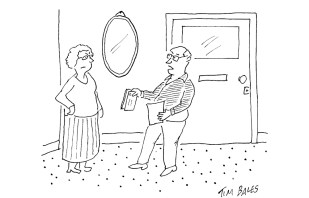
‘The assault on the modern state has not yet destroyed it,’ say Hanson and Kopstein, ‘but it has generated a global struggle between two principles of rule – in short, the rule of law versus the rule of men – the outcome of which has yet to be decided.’ The authors, who are American academics, believe it has three roots: Christian nationalism, anger at encroachments on Republican presidents by ‘liberal judges and bureaucrats’, and libertarians. The new authoritarians, they say, take their inspiration from Vladimir Putin, who relies on old friends to advise him.
Hanson and Kopstein write:
When the state as we know it disintegrates and is replaced by the arbitrary rule of powerful men and their political households, it will become perfectly clear that neither libertarianism nor social democracy is attainable – only the politics for survival for oneself and one’s loved ones in a violent world of competing clans and empires.
Their book is short, clearly written and dreadfully important. It does not advocate this or that political or economic theory. It does not even particularly defend democracy. It gives us the unwelcome but unavoidable news that state bureaucracy – the thing we love to hate, the pantomime villain of politics, the second best source of jokes after mothers-in-law – is crucial to our happiness, freedom and well-being, and is in mortal danger.
Could anyone be trusted in Tudor and Stuart England?
‘Spies, you are lights in state, but of base stuff,/ Who, when you’ve burnt yourselves down to the snuff,/ Stink, and are thrown away.’ Ben Jonson likened his fellow secret agents to a tallow candle: a grotty necessity, to be discarded without regret.
Who now remembers Arthur Gregory, and his ‘admirable art of forcing the seal of a letter; yet so invisibly, that it still appeared a virgin to the exactest beholder’? Or the scrivener Peter Bales, so dainty with his quill that he could forge any handwriting, and who touted at Elizabeth I’s court the Renaissance equivalent of microfilm, a script so minuscule that he could fit the Lord’s Prayer, the Credo, the Ten Commandments, two short Latin prayers, his name, motto, and the date ‘within the circle of a single penny… so accurately wrought as to be very plainly legible’?
Secret messages could be hidden in a Royalist’s wooden leg or in an aristocratic lady’s towering bouffant
These and other precarious grafters have been fished out of the bin of history by Nadine Akkerman and Pete Langman in Spycraft. A companion piece to Akkerman’s acclaimed 2019 Invisible Agents, about the flourishing of women spies in the English Civil War, it wears the weight of its impeccable learning even more lightly, as it canters through forgeries, codes, disguises, invisible inks and poisons.
Done badly, the book would still have what, in spy novel circles, is called ‘how-stuff-works appeal’; done well, as it is, there is joy on every page. ‘How usual it is for buffoons to be used as spies,’ observed Robert Cecil, and Clouseau moments abound. Take the hapless Gunpowder Plotter Henry Garnett, who in his correspondence from the Tower of London decided marmalade would have to do as his invisible ink; or envious reports from Venice of such gadgets as ‘a pocket Church book with a pistol hid in the binding, which turning to such a page, discharges’.
Amid these capers is a serious message: that ignorance about the nuts and bolts of Renaissance spycraft leads to bad history. When Mary Queen of Scots took a week to respond to Babington’s inept invitation to a plot, it was not, as some historians infer, because she was wrestling with a dilemma. In fact, because encrypted correspondence was such a sluggish business, it was tantamount to an instant ‘Yes!’.
Akkerman and Longcroft put their knowledge to good use, serving up a couple of (rather chewy) scoops, and testing and tabulating all the early modern techniques in a valuable appendix. The result is anything but dry: rather, the reader comes to share the paranoia of an age when even the Pope was using human guinea pigs, Dr Mengele-like, to test poison antidotes. Secret messages could be anywhere: in a Royalist soldier’s wooden leg; in an aristocratic lady’s towering bouffant; even in a raw egg, according to Thomas Lupton’s 1579 book, A Thousand Notable Things. (An egg soaked in vinegar for six hours becomes soft, so that a slit can be made in the shell, and a piece of paper insinuated. Another soak in cold water renders the egg unsuspiciously brittle again.)
For those who found Christopher Andrew’s soup-to-nuts history of spying, The Secret World, uneven or unwieldy, Spycraft offers a satisfying microcosm: the birth of an English secret service. So primitive was espionage in the court of Henry VII that he was obliged to learn the rudiments of ciphers from his more worldly Spanish daughter-in-law Katherine of Aragon. A hundred years later, Francis Bacon could justly claim to have devised ‘the perfection of a cipher, which is to make anything signify anything’ and yet seem to the hostile observer ‘void of all suspicion’.
There were constant setbacks – when William Cecil tried to start an archive of the late Mary I’s papers, he was told that the documents were unavailable because they had just been used to stuff her corpse. But, broadly, this is a success story, of England’s explosive innovation in a high-stakes information war that has many echoes of our internet age. (Robert Dudley would sign his letters to Elizabeth with a doodle of watchful eyes: ‘an early modern emoji’.) Spycraft also culminates in an amusingly topical hate object, ‘the general Post Office’, founded by Oliver Cromwell not for the benefit of letter-writers but explicitly for surveillance – that his spy chief might ‘discover and prevent many dangerous, and wicked designs… by letter’.
Even the most down-and-out characters here cannot help but think in poetry, like the cryptanalyst Thomas Phelippes, thwarter of the Babington Plot, who later complained from debtor’s prison to Robert Cecil that the code he had been sent to break was of ‘such kind as will ask time to tread it out’. We might look back with condescension upon an age that believed poison could be neutered by dipping a ‘bezoar ston’ into a goblet of wine (as both Elizabeth I and Mary Queen of Scots nervously did), but they in turn might pity us our leaden use of the English language – the one technology that has surely deteriorated since the time of the Tudors.
The downside to being rich: Long Island Compromise, by Taffy Brodesser-Akner, reviewed
Fleishman is in Trouble was one of the funniest novels of 2020, and it catapulted Taffy Brodesser-Akner, a New York Times journalist, into the spotlight with a US TV series two years later. Long Island Compromise is a rollicking family saga written with the same sardonic wit. It is centred around a wealthy family living in a suburb of Long Island, who owe their fortune to the late patriarch, a Jewish European émigré who set up a successful factory making polystyrene foam moulds. There’s a backstory to this, which we learn later, but his indomitable widow and his son Carl’s wife Ruth rule the roost. At the beginning, Carl is kidnapped, then returned traumatised, and the implications of this violent act affect Ruth and their children Nathan, Beamer and Jenny.
Brodesser-Akner can spin an excellent yarn with intelligence and wit. She is very much a post-modern writer, using brackets to expound on details in gossipy, amusing asides, such as telling us what Carl’s secretary thought when he didn’t turn up for work on the day he was kidnapped.
The characterisation of Nathan and Beamer are sources of much hilarity, and although pushed to the point of parody, they are elevated to heights of comic genius by surreal touches, such as Beamer’s obsession with procuring the actor Mandy Patinkin for his lame, cliché-ridden screenplay. The author is master of the scathing put-down:
Beamer, after a storied high school career in which he relieved nearly a full quarter of his class’s virginities, became a moderately successful screenwriter, most notably of a trilogy of action movies that are in constant replay on certain basic cable channels (and sometimes the pay ones, but only the less prestigious ones, and only late at night).
The asides are as delicious:
Ludmilla the housekeeper and Paulette the nanny were bustling around… trying to read the tea leaves of their mistress’s absence in order to anticipate her mood.
And: ‘Ludmilla made her face into the Slavic stone that she had trained it to be.’
Only slightly let down only by a mawkish death scene which serves as a device to clarify the back-story, this will be one of my books of the year.
At last, a private education that wasn’t unmitigated misery
There has been a spate of books recently about private education, ranging from academic denouncements of their malign effects on society, such as Francis Green and David Kynaston’s Engines of Privilege, to Charles Spencer’s grim chronicle of neglect and abuse, A Very Private School. Though technically falling within this genre, 1967, the singer-songwriter Robyn Hitchcock’s diverting account of his formative spell at Winchester College, seems to hail from a rosier era. It is one where matron’s buttered crumpets rather than bullying were the chief topics of Billy Bunter-esque reminiscences that proclaimed schooldays the happiest of one’s life. Indeed Hitchcock even wonders whether his parents got their ‘money’s worth’, since, contrary to expectations, he was not ‘beaten up, sodomised or ritually humiliated by the other inmates’. He seems almost dis-appointed in retrospect that nobody stuck his ‘head down a toilet bowl’ or ‘stripped and mocked’ him.
Instead, Winchester, or more specifically the communal gramophone in his school house, was to give Robyn (born in 1953) the musical marrow to suck on that has provided him with a decent income for close to half a century. It was there that Bob Dylan, the post-moptop Beatles, Syd Barrett’s Pink Floyd, Jimi Hendrix and the Incredible String Band all came his way. The chorus refrain of ‘How does it feel / to be on your own?’, from ‘Like a Rolling Stone’, heard blaring from the house gramophone shortly after he was deposited at school by his parents, made him an instant Bobcat convert. Dylan, he felt, seemed to be addressing him personally – those lyrics speaking to his own sense of ‘being marooned alone in an alien world’.
Nevertheless, having grown officer-class tall by the autumn term of 1967, he worries about being unable to look up to his idol, who is now ‘nearly a foot shorter’ than him. And his worst fears are soon realised when this mythic year slips away and Dylan returns in 1968 with John Wesley Harding, after a prolonged silence and rumours of a motorcycle crash. This country rock album recorded in Nashville, Tennessee, Hitchcock characterises (rather unfairly to my admittedly state school-educated oik’s ears) as ‘flat, beige and not much fun to listen to’. Yet, ironically, Hitchcock himself would wind up both living and recording in Nashville.
Few British artists have been quite so feted stateside but largely ignored at home as Robyn Hitchcock. Cited as an inspiration to REM and Yo La Tengo as well as a mainstay of American college radio stations since the 1980s and the subject of a live concert film by Jonathan Demme. Hitchcock initially came to prominence in the late 1970s as the lead singer of the Soft Boys. A Cambridge-based post-punk outfit, they were considered a little too enamoured of the Byrds to be taken seriously by a UK music press then championing the northern gloom of Joy Division. They split up in 1981.
While the band’s former lead guitarist Kimberley Rew, a Jesus College archeology graduate, would go on to enjoy success with Katrina and the Waves, penning the FM radio staple ‘Walking on Sunshine’ and their 1997 UK Eurovision winner ‘Love Shine a Light’, along with ‘Going Down to Liverpool’, a hit for the Bangles, mainstream fame has mostly eluded Hitchcock. He has always worn his 1960s influences on his sleeve, following a determinedly narrow path of literate, psychedelia-tinged folk rock that has earned him a devoted following and the admiration of similarly singular peers such as Nick Lowe and XTC’s Andy Partridge, with whom he has collaborated.
The book makes clear what was previously only sonically implicit, offering more than a few join-the-dots moments. Familiar Hitchcockian obsessions – fish, cheese and public transport – are present, as is an admission to being on the autistic spectrum. There are also wonderfully surreal turns – an imagined conversation with a lager-lime-drinking Dylan about the New Vaudeville Band’s novelty number ‘Winchester Cathedral’ among the comic set pieces.
We encounter, too, a young Brian Eno, the former Roxy Music man and record producer, then a teacher at the nearby art school but seemingly already making waves locally as a convener of groovy happenings. And there are affectionate if unsentimental portraits of Hitchcock’s parents, whom he credits with instilling in him a love of words. From his father, Raymond, he also inherited a mania for drawing. A taciturn veteran of the second world war injured in the D-Day landings, Raymond was an engineer turned would-be Francis Bacon who went on to write the bestseller Percy, eventually adapted into a sexploitation romp starring Hywel Bennett in 1971. Hitchcock’s mother, Joyce, an avid reader (whose family money helped bankroll Raymond’s artistic ambitions), introduced Robyn to William Faulkner and bought him his first guitar and LPs by Bert Jansch. They, of course, also sent him to the same school as our former prime minister Rishi Sunak, a self-declared Taylor Swift fan, although with notably different results. But then you pays your money and you takes your chances.
A haunting apparition: Bonehead, by Mo Hayder, reviewed
It is well established that women are happy to read novels written by men but that male readers rarely extend a reciprocal courtesy. The late Mo Hayder is a case in point, since despite the extraordinary sales of the novels she wrote before her premature death in 2021, her fan base remains overwhelmingly female. It may be that the extreme violence often found in her books (‘lurid’ would not be unfair) strikes men as a trespass on what has traditionally been a male preserve. Whatever the reason, male reviewers tended to shy away – I know that, since I was one of them.
Yet just ten pages into Bonehead, her posthumously published novel, I found myself completely drawn into Hayder’s story and the haunted creepy world it depicts. Alex Mullins is a young policewoman who, after time in London spent with the Met, has come home to Gloucestershire to work locally and live with her mother. She also hopes to shed the inner demons triggered by a terrible accident two years earlier. A coach carrying former students on a class reunion swerved off the road into deep water, and most of the occupants drowned. Alex, though injured, was one of only seven survivors, along with her close friend Aaron, who has also joined the police. What haunts Alex, and brings her back to work in the countryside, is the image of a female figure she is convinced she saw on the road just before the coach’s fatal swerve.
The novel is told unusually – through the first-person voice of Alex that alternates with the third-person viewpoint of Aaron’s mother, Maryam. She is a woman of little confidence who has married a ‘catch’, but remains convinced she doesn’t deserve him. Like Alex, Maryam lives near woods said to be haunted by ‘Bonehead’, a mythic female whose presence there begins to seem more credible as strange things start happening in both households, including the disappearance of each family’s dog.
The mystery of the ghoulish face Alex thinks she saw slowly unravels; but the real interest of the novel is its exploration of the varying impacts the crash has had on the survivors and the families of those who died. We get to know Alex best, but though we grow attached to her and indeed to Maryam, it’s not that we particularly like either of them so much as they become familiar.
The writing is restrained but beautifully descriptive, the pace varied according to the tensions it is intended to create, and the plotting is – almost throughout – clever, even ingenious. I say ‘almost’ because the book’s climactic ending is both gruesome and unconvincing – the opposite of most finales of the genre. I cannot help but feel (as other reviewers have noted), that had the author had more time, she would have changed it.
Otherwise, the talent at work here is remarkable. Although Hayder’s death means there will be no more books from her, readers new to her work (yes, mainly men like me) have the consolation that there are 11 others to read.
